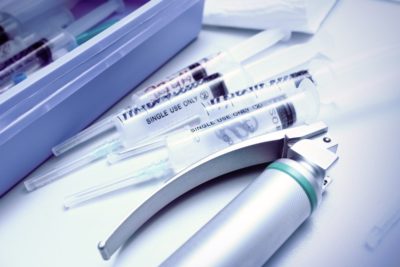Understanding the five pharmaceutical supply chain stakeholders

The Pharmaceutical supply chain is complex in nature, but in essence there are five clear stakeholders, whom under legislation have to share data to support serial number authentication and traceability.
In the previous post 'What does serialisation mean for the pharmaceutical industry?' discussed the impacts of legislation, this post reviews the key stakeholders from a European Union perspective and how they are connected together to support serial number authentication and traceability.
Manufacturers
Serialisation will require manufacturers to redesign their labels to accommodate the new 2D barcode. Changes in labeling may also involve alterations to or redesign of packaging structure or graphic elements. This will likely have an impact on multiple packaging processes, which will need to be resolved, either through increased manpower or greater automation, if current production levels are to be maintained.
Manufacturers’ IT architecture will need to be capable of generating, storing, capturing and transmitting millions of serial numbers for numerous supply chains. That will inevitably entail significant capital investment to update exiting equipment, hardware and software and retrain staff.
The European Union (EU) FMD details how central data repositories will be set up, either at national or supranational level and connected to a European Hub – a non-profit organisation funded by manufacturers and brand owners. The legislation requires unique identifiers i.e serial numbers to be uploaded to the European Hub, with verification of medicines performed in the National Medicines Verification Systems (NMVS). To that end, system interoperability, data ownership and access have been agreed by stakeholders, based on mutually endorsed principles.
Image: Responsibilities of Supply Chain Partners (Source EMVS)
Wholesalers and distributors
The obligations of wholesalers and distributors are broadly similar to those of manufacturers: to secure the supply chain and verify any suspicion of falsified medicines. Primary wholesalers who buy from the original manufacturer or Marketing Authorisation Holder will not need to do risk-based verification as the product is coming from a trusted source.
Secondary wholesalers who buy product off the market or from other wholesalers need to complete risk-based verification. Those that sell ‘out of market’, such as to universities for research, must decommission serial numbers. Distributors must complete risk-based verification for saleable returns prior to reselling the product, regardless of product source.
Image: Point of dispense medicines verification (Source EMVS)
Pharmacies
This diverse group encompasses community pharmacies, dispensing clinical practices, hospital pharmacies and internet pharmacies. Pharmacists will be responsible for making their connections to the database, as well as for software upgrades.
Community pharmacists will need to scan the barcode to verify products at the point of dispensing to the patient. This will also alert the pharmacist in real-time if the product is out of date, recalled or withdrawn from the supply chain.
Hospital pharmacies do not deliver directly to the patient but to departments or doctors, with many medicines administered in the hospital environment from stock held in clinical areas, such as wards, theatres, Accident & Emergency departments and Intensive Care Units. It is not always possible to identify in advance which packs of medicines are destined for dispensing directly to patients and which will go to clinical areas. In practice, it may prove impractical to scan twice – on receipt and at the point of dispensing. Hospital pharmacies will need to authenticate and decommission medicines before dispensing them (or recommission them in certain cases).
Online pharmacies enable consumers to buy an assortment of medication through e-commerce sites. While many are reputable, others have been a major contributor to the drug counterfeiting trade. In all cases of drug counterfeiting, the product, packaging and label information are designed to look like the original product.
The EU introduced a common logo (Directive 2011/62/EU) for online pharmacies and retailers in EU countries to vouch for the authenticity of the website and guarantee product safety. The logo was adopted through the implementation of Regulation 699/2014 which came into effect from 1stJuly 2015.
While matrix barcodes for tracking and tracing are not fool-proof, electronic track and trace can help motivated consumers to verify the safety of drugs bought online, and regulators can better understand where and how frequently products leave the distribution chain.
Patients
Ultimately, the purpose of both the EU FMD and the US DSCSA is to improve patient safety by securing the supply chain. We can expect to see the emergence of consumer apps linked to the validation system that will enable mobile scanning of the 2D barcode, enabling patients themselves to verify drug safety for extra assurance.
Trading with Europe
The main global pharma producing nations such as USA , Brazil, China, South Korea, Russia and India have or are in the process of implementing mass serialisation programs to combat the growing counterfeit industry. These countries operate under their own standards such as in the USA the use of the national drug number, but there is a movement towards the implementation of GS1 global standards as products produced in the USA and exported to the european union have to conform to the Gs1 2d barcode format and product serial numbers uploaded to the European hub and national system of the importing country.
We can help you!
At Boyum we know your industry and via Produmex WMS for Life Sciences for distributors and manufactures, this industry solution, contains specific value added features that meet legislative and business requirements at a factory and/or warehouse level even with 3PL operations.
Get in touch with our specialists, contact our team now!
Or go and download our Produmex WMS brochure to read everything there is to know!
